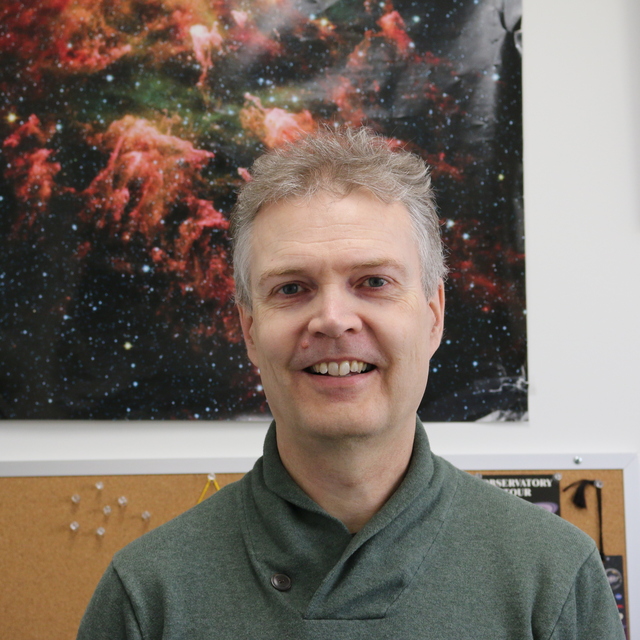
Resolved Structure in the Nuclear Region of the Ultraluminous Infrared Galaxy Markarian 273
November 1997 • 1997ApJ...490L..29K
Abstract • We have studied the core morphology of the ultraluminous infrared galaxy Mrk 273 by combining a high-resolution adaptive optics near-infrared image with an optical image from the Hubble Space Telescope and interferometric radio continuum data, all at spatial resolutions of 150 mas or better. The near-infrared image reveals that the nucleus has two main components, both of which have radio counterparts. The strongest component (N) shows very similar extended structure in the radio and near-infrared. It has a flat radio spectrum and is resolved into a double-lobed structure (Ne; Nw), with a separation of 90+/-5 mas (70 pc). A similar structure is detected in the near-infrared. We identify this component as the location of the active nucleus. The second component (SW), strong in the near-infrared but relatively weak in the radio, is located ~1" to the southwest. We interpret this as an obscured starburst region associated with the merger. The radio continuum images show a third, strong, component (SE) that has previously been interpreted as a second nucleus. However, it shows no associated optical or near-infrared emission, which suggests that it is in fact a background source.
Links
- SIMBAD https://simbad.u-strasbg.fr/simbad/sim-ref?querymethod=bib&simbo=on&submit=submit+bibcode&bibcode=1997ApJ...490L..29K
- PREPRINT http://arxiv.org/abs/astro-ph/9709234
- NED https://ned.ipac.caltech.edu/uri/NED::InRefcode/1997ApJ...490L..29K
- DATA https://archive.stsci.edu/mastbibref.php?bibcode=1997ApJ...490L..29K
- DATA https://hst.esac.esa.int/ehst/#/pages/search;bibcode=1997ApJ...490L..29K
- ELECTR https://doi.org/10.1086%2F311015
- SPIRES http://inspirehep.net/search?p=find+eprint+astro-ph/9709234



